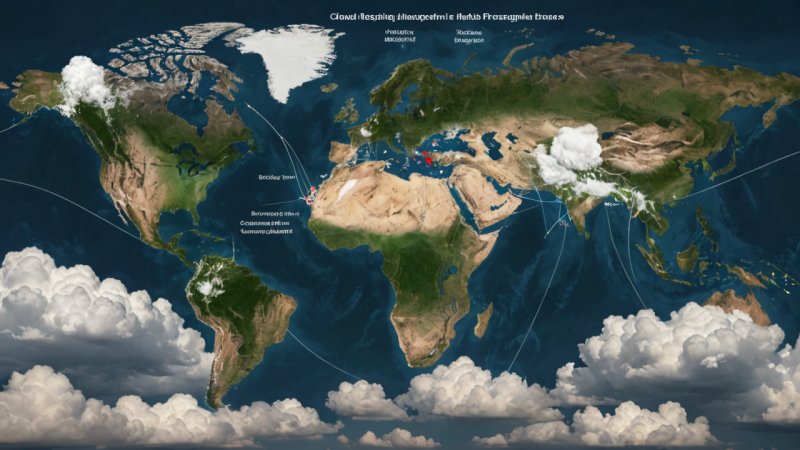In an era marked by increasing frequency and severity of natural disasters, the need for effective disaster risk management (DRM) has never been more pressing. Cloud computing, with its scalability, flexibility, and cost-effectiveness, has emerged as a transformative force in this domain. By leveraging cloud-based technologies, organizations can enhance their preparedness, response, recovery, and mitigation strategies. This article delves into the various innovations in cloud computing that are reshaping disaster risk management, offering insights into their applications, benefits, and real-world case studies.
Understanding Disaster Risk Management
Disaster risk management encompasses a wide range of activities aimed at minimizing the impact of disasters on communities and infrastructure. It involves four key phases: preparedness, response, recovery, and mitigation. Each phase requires access to timely data, communication tools, and collaborative platforms, all of which can be significantly enhanced through cloud computing.
The Role of Cloud Computing in Disaster Risk Management
Cloud computing provides a suite of tools and services that can be instrumental in disaster risk management. Its core advantages include:
- Scalability: Cloud services can be scaled up or down based on the needs during a disaster, allowing organizations to allocate resources efficiently.
- Cost-Effectiveness: By utilizing pay-as-you-go models, organizations can reduce costs associated with hardware and software maintenance.
- Accessibility: Cloud-based applications can be accessed from anywhere with an internet connection, facilitating remote collaboration and information sharing.
- Data Storage and Analysis: The cloud enables vast amounts of data to be stored and processed, allowing for advanced analytics to inform decision-making.
Innovations in Cloud Computing for Disaster Risk Management
Several cloud computing innovations are particularly relevant to disaster risk management:
1. Geographic Information Systems (GIS) in the Cloud
GIS technology has traditionally been used for mapping and analyzing spatial data. Cloud-based GIS solutions allow organizations to visualize disaster risks and impacts in real-time. These platforms enable the integration of various data sources, such as satellite imagery and weather forecasts, to create comprehensive risk assessments. For example, the integration of GIS with cloud computing has been pivotal in tracking hurricanes and their projected paths, helping communities prepare in advance.
2. Big Data Analytics
The ability to analyze large datasets in real-time is crucial in disaster scenarios. Cloud computing platforms can process vast amounts of data from various sources, including social media, sensor networks, and government databases. This capability enables organizations to identify trends, assess vulnerabilities, and make informed decisions rapidly. For instance, during the COVID-19 pandemic, cloud-based analytics platforms helped public health officials track the spread of the virus and allocate resources effectively.
3. Communication and Collaboration Tools
Effective communication is essential during a disaster. Cloud-based collaboration tools, such as video conferencing and project management applications, allow stakeholders to coordinate efforts seamlessly. These tools facilitate information sharing between government agencies, non-governmental organizations, and the public, ensuring a unified response to disasters. For example, platforms like Slack and Microsoft Teams have been instrumental in coordinating relief efforts during natural disasters.
4. Cloud-Based Emergency Management Systems
Emergency management systems hosted in the cloud provide real-time information to decision-makers before, during, and after disasters. These systems can include features like incident reporting, resource tracking, and situational awareness dashboards. An example of this is the use of cloud-based platforms by FEMA (Federal Emergency Management Agency) in the United States to manage disaster response and recovery more effectively.
5. Remote Sensing Technologies
Remote sensing technologies, such as drones and satellites, are increasingly being integrated with cloud computing. These technologies allow for real-time data collection and analysis, providing crucial insights into disaster areas. The cloud enables the storage and processing of this data, facilitating timely interventions. For instance, post-disaster assessments can be conducted rapidly using aerial imagery processed in the cloud.
Case Studies: Cloud Computing Innovations in Action
To illustrate the impact of cloud computing innovations in disaster risk management, let’s examine a few notable case studies:
Case Study 1: The 2015 Nepal Earthquake
After the devastating earthquake in Nepal, cloud computing played a critical role in the relief efforts. Organizations like the World Bank utilized cloud-based GIS and remote sensing technologies to assess damage and plan recovery strategies. By using cloud platforms, responders could analyze satellite imagery to identify the most affected areas and prioritize aid distribution.
Case Study 2: Hurricane Harvey Response
During Hurricane Harvey in 2017, cloud-based data analytics and communication tools were essential for coordinating response efforts. Local government agencies used cloud platforms to share real-time data on flood levels and resource availability. This collaboration allowed for a more efficient allocation of resources and improved situational awareness among responders.
Case Study 3: COVID-19 Pandemic Response
The COVID-19 pandemic highlighted the importance of cloud computing in public health crisis management. Cloud-based platforms facilitated data sharing among healthcare providers, government agencies, and researchers. For instance, the COVID Tracking Project used cloud technology to compile and analyze data on testing and case numbers across the United States, guiding public health decisions.
Challenges and Considerations
Despite the many advantages of cloud computing in disaster risk management, several challenges must be considered:
- Data Security and Privacy: Ensuring the security of sensitive data in the cloud is paramount, especially for organizations handling personal information.
- Infrastructure Limitations: In some regions, the lack of reliable internet connectivity can hinder the effectiveness of cloud solutions.
- Interoperability: Different organizations may use various cloud platforms, leading to challenges in data sharing and collaboration.
Conclusion
Cloud computing innovations are revolutionizing disaster risk management by enhancing preparedness, response, recovery, and mitigation strategies. The scalability, accessibility, and analytical capabilities of cloud-based solutions make them invaluable tools for organizations involved in DRM. As we continue to face increasing challenges from natural disasters, embracing these technologies will be crucial for building resilient communities and ensuring effective disaster response. By learning from real-world case studies and addressing the associated challenges, stakeholders can harness the full potential of cloud computing to safeguard lives and property in the face of adversity.






